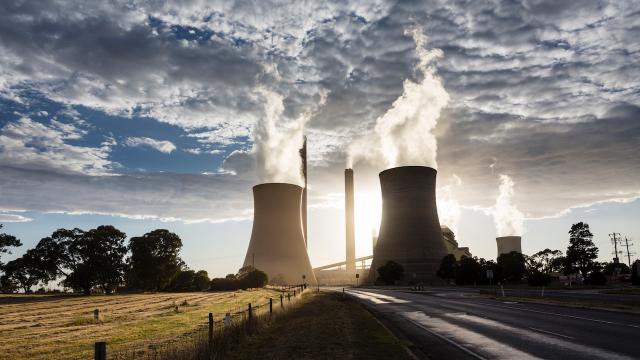The Climate Council has published a new report that names and shames Australia’s “filthiest” fossil fuel polluters. Topping the list the council is calling “the dirty dozen” is Chevron Australia.
Why name and shame? Well, according to the Climate Council, “Fossil fuel corporations in Australia are feeding the climate crisis – threatening our future and destroying our environment – while raking in billions in profit and often paying little or no income tax”, adding:
“It’s time to demand the Dirty Dozen stop putting profits before people and planet, and start pulling their weight by genuinely and rapidly cutting their emissions.”
Seems reasonable. Let’s run through the list.
12 biggest fossil fuel polluters, according to the Climate Council
1. Chevron Australia
In 2020-21, Chevron Australia made $12.5 billion and paid $30 in income tax. Its emissions, the council said, were 52.3 million tonnes of CO2 since 2016 (which is the equivalent of 2.7 million Australians in a year).
2. Woodside
Paying no income tax on 2020-21 income of $6.7 billion, Woodside is reported by the Climate Council as being responsible for pumping 47.5 million tonnes of harmful carbon pollution into the atmosphere since 2016.
3. Anglo American
Criticisms on their name aside, the report calls Anglo American “one of the world’s largest coal miners … [with a] a history littered with disregard for the health of local communities, workers and the environment where it operates”. The company made $2.7 billion in Australia in 2020-21, but like Woodside, paid $0 in income tax. Anglo American’s emissions have totalled 31.6 million tonnes of CO2 since 2016.
4. Santos
Coming in fourth in the Climate Council’s dirty dozen list is Santos. Santos made $4.8 billion in 2020-21, paying $17,300 in income tax. Santos has produced a staggering 27.7 million tonnes of carbon pollution since 2016 – more than the annual emissions of every person in South Australia where the corporation is headquartered.
5. BHP
“BHP used to brand itself as the ‘Big Australian’, but the ‘Big Polluter’ is a much better fit for the corporation that comes in fifth among our dirtiest fossil fuel emitters,” the Climate Council writes. While BHP is responsible for 22 million tonnes of CO2 since 2016, its income/tax position can’t be easily determined due to the way it reports to the ATO.
6. Glencore Coal
Making $16.6 billion in Australia in 2020-21, Glencore Coal paid zero tax. Per the Climate Council, Glencore Coal is responsible for 22 million tonnes of CO2 since 2016.
7. Inpex Holdings Australia
Inpex is a Japanese-owned oil and gas giant operating massive offshore gas operations in Western Australia and the Northern Territory. It made $3.6 billion here in 2020-21, paying a whopping absolutely nothing in income tax. 20.5 million tonnes of CO2 since 2016 is on its hands.
8. Shell Australia
The local arm of British fossil fuel giant Shell made $12.3 billion in Australia in 2020-21, paying $47.8 million in tax. The taxpayer is responsible for 19.1 million tonnes of CO2 since 2016.
9. ConocoPhillips
Making $5.7 billion in 2020-21 and paying no tax at all, Texan fossil fuel giant ConocoPhillips “fracks, blasts and sucks oil and gas out of every corner of Australia”. 14.9 million tonnes of CO2 since 2016 is on its sheet.
10. South32
Next on the list is BHP spinoff South32. The company made $3.7 billion in Australia in 2020-21, paying $87 million in tax. South32 is responsible for 10.4 million tonnes of CO2 since 2016.
11. Esso Australia
Esso Australia’s parent company, ExxonMobil Australia, made $11.1 billion here in 2020-21, paying not a single cent in tax. They’re responsible for 9.7 million tonnes of CO2 since 2016.
12. Centennial Coal
Rounding out the Climate Council’s dirty dozen is Centennial Coal. The company paid no tax in 2020-21 after making $1 billion. Its emissions are 9.5 million tonnes of CO2 since 2016.
These 12 companies in total released 287.8 million tonnes of CO2 since 2016. That’s equivalent to more than half of Australia’s total emissions for a year, the Climate Council notes.
In publishing this report on the country’s biggest polluters, the Climate Council is pushing for the tightening of the existing Safeguard Mechanism. The Safeguard Mechanism is a set of rules that regulates Australia’s 215 biggest polluters. Strengthening this law is a key part of the federal government’s plans to cut the harmful greenhouse emissions that are driving the climate crisis.
